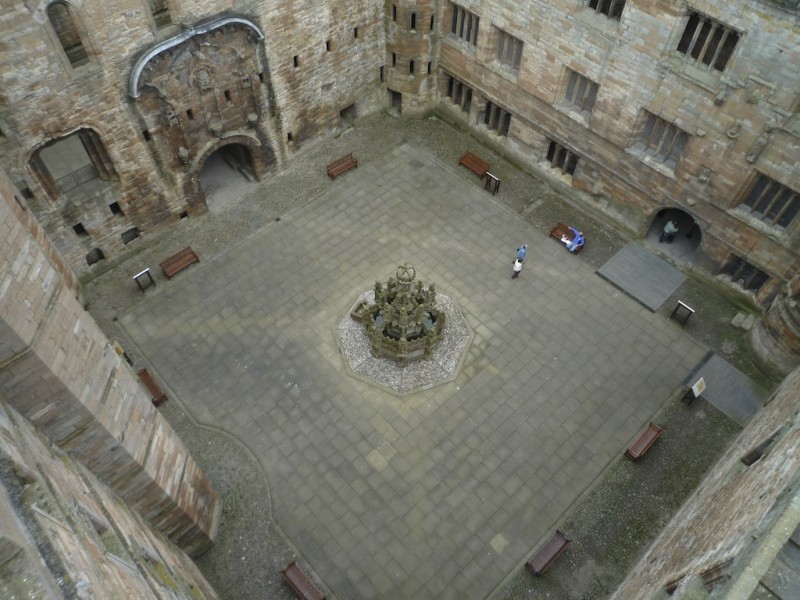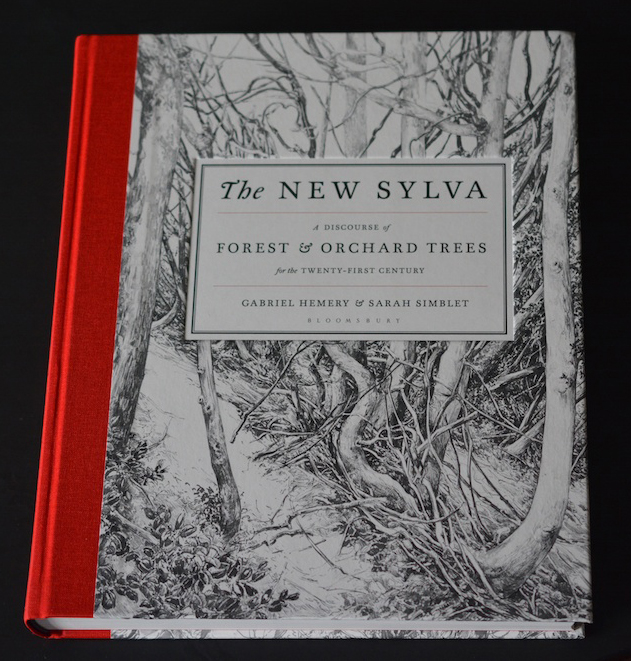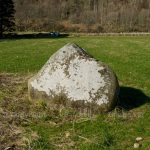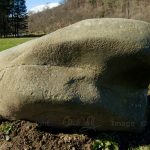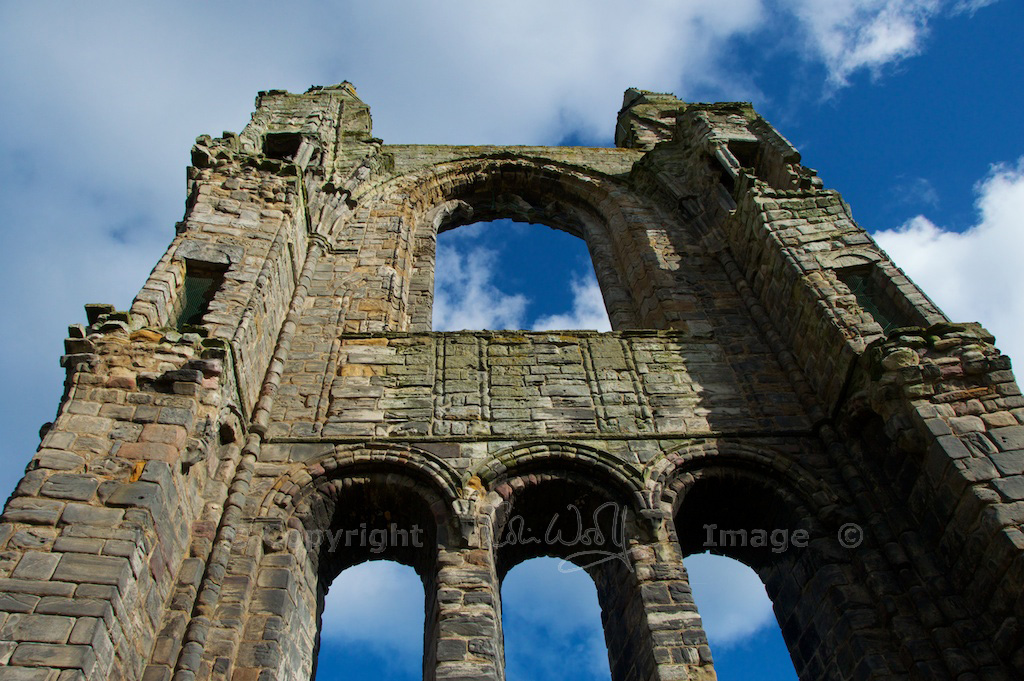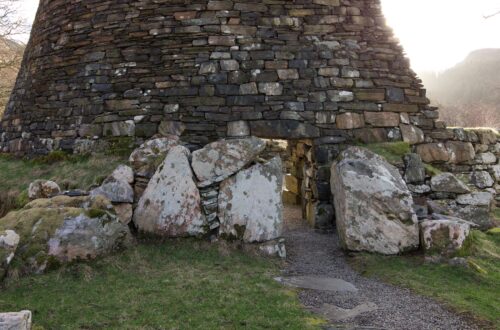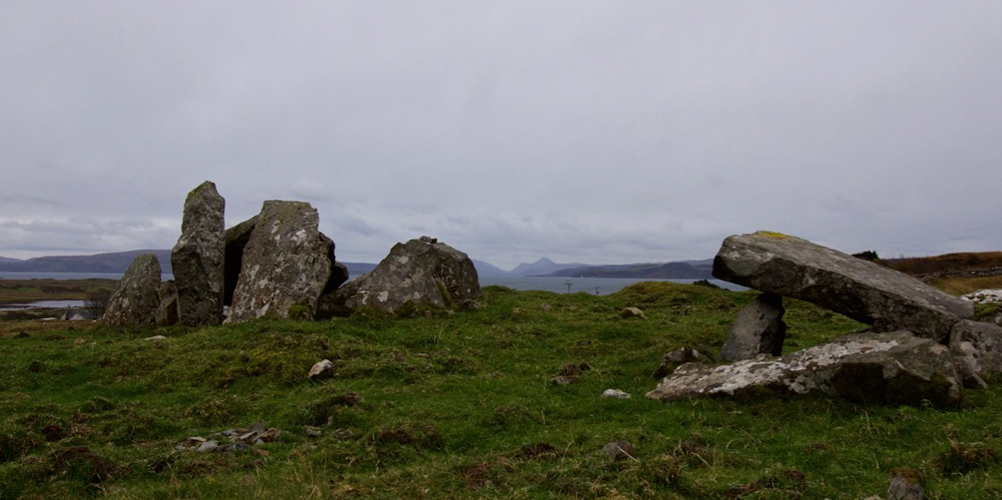
The stone circles of Fortingall
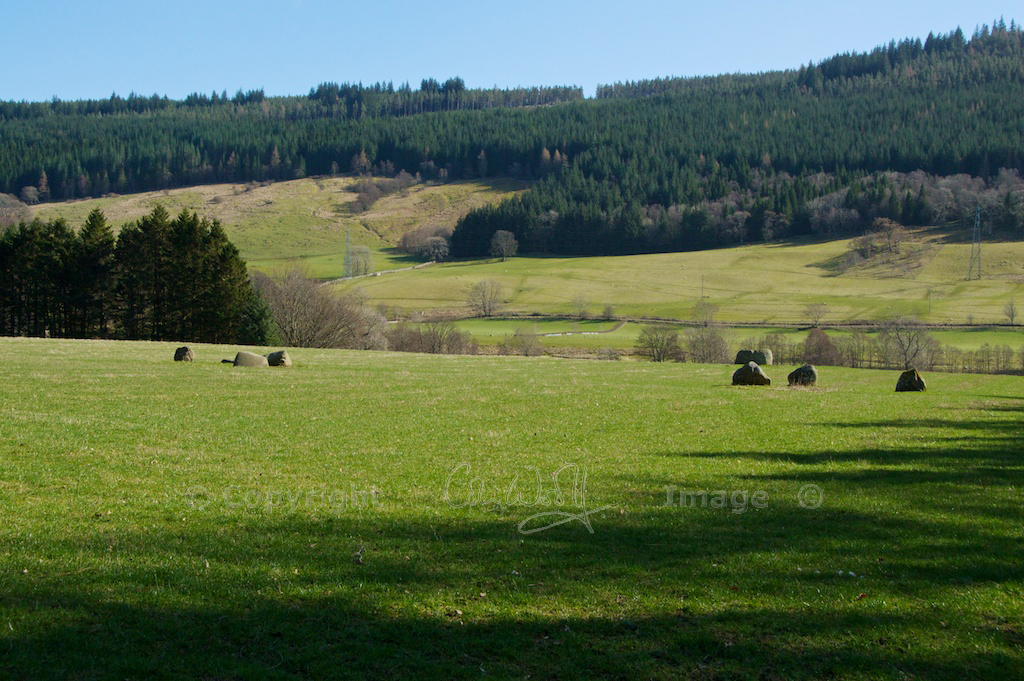 At Fortingall in Perthshire, in a field that leads down to the River Lyon, are a number of large stones. At first glance, they appear to be scattered at random as if by some giant hand, but it soon becomes clear that they are arranged in three groups. If you’re the kind of person who loves standing stones (or even sitting ones), you just have to go and inspect them.
At Fortingall in Perthshire, in a field that leads down to the River Lyon, are a number of large stones. At first glance, they appear to be scattered at random as if by some giant hand, but it soon becomes clear that they are arranged in three groups. If you’re the kind of person who loves standing stones (or even sitting ones), you just have to go and inspect them.
These massive boulders are rounded and smooth – historians describe them as ‘water-worn’, and when you get close and run your hands over them there is no doubt about it. They are nothing like the angular stones of Callanish or the squared blocks of Stonehenge; it looks as if they have been sculpted by nature.
 The best geological description I can find for them is ‘blue whinstone’, which could mean dolerite or basalt; I was intrigued to see that they sparkle in the sunlight, as a result of some quite large crystals which I think might be mica. The Royal Commission on the Ancient and Historical Monuments of Scotland adds that they “…obviously contain metal as compasses will not give a true reading in the area.”
The best geological description I can find for them is ‘blue whinstone’, which could mean dolerite or basalt; I was intrigued to see that they sparkle in the sunlight, as a result of some quite large crystals which I think might be mica. The Royal Commission on the Ancient and Historical Monuments of Scotland adds that they “…obviously contain metal as compasses will not give a true reading in the area.”
But as for any sense of their original positioning or alignment, you are completely lost.
For most of my information I’m relying on the historian Aubrey Burl, who conducted extensive research into the stone circles of Britain from the 1970s onwards, and published several books on the subject. He says:
Fortingall East and West, seven miles west of Aberfeldy
“These are two of three megalithic sites close together on a terrace overlooking the River Lyon. Before excavation in 1970 they seemed to be Four-Posters, from each of which one stone had been removed. Digging revealed that in reality they were sub-rectangular settings of eight stones with the largest stones at the corners.”
He continues:
“…paired eight-stone circles are fairly common in central Scotland, and the Fortingall settings may be the results of a mixing of traditions. They stand by what may be a ruined and idiosyncratic RSC.”
from ‘The Stone Circles of the British Isles’
In Burl’s description, ‘RSC’ stands for ‘Recumbent Stone Circle’, and he is referring to the third, most southerly, group of stones (shown below). As the name suggests, recumbent stone circles contain at least one very large stone which has been deliberately laid on the ground, often flanked by smaller upright ‘posts’. You immediately wonder what they were used for. But in any case, archaeologists now argue that this third grouping was originally another ‘Four-Poster’.
From the excavation of one group of stones, Burl tells us that “Flecks of charcoal and cremated bone were recovered.” Canmore, the database of the RCAHMS, reveals that a small sample of bone was dated to around 1110-900 BC. This does not necessarily indicate when the stones were erected – it merely proves that someone was buried here at that date. The rest is pure speculation.
It seems that, in the 19th century, superstition led local people to topple some (but not all) of the stones into pits that they had dug ready for them. In each ‘circle’ of four stones, three were left in place. How do archaeologists know this? Because a beer bottle of that era was found buried underneath one of the fallen stones. Interestingly, the hole had been backfilled with small stones “such as might come from a central cairn”.
Why would anyone want to do such a thing?
Aubrey Burl has an answer. He suggests that: “In each case, three stones were left standing as tokens of the Christian Trinity.”
But there are other possibilities. Many Victorian landowners got very excited about the prospect of doing some excavation, and it’s quite likely that an amateur historian had a dig around, maybe disturbing some of the stones in the process. Or perhaps the local farmer tried to shift them out of the way of his plough, and, in keeping with many of the stories attached to standing stones, he was visited by a mysterious pestilence before his task was complete.
Or just maybe, following Burl’s train of thought, the local vicar was keeping a zealous watch for any possible infringement of the scriptures and decided that the landscape needed re-arranging…
– “Look here, Murdo MacDubh, at these stones, standing blatantly in groups of four; they present an offence to the eye of holiness. I declare, I flinch when my gaze falls upon them. I exhort you to uproot one of each, and cast it down upon the earth. My sexton will be pleased to lend a hand. And do not let me catch you drinking beer.”
(I would like to point out that the above scenario is entirely my own fabrication!)
One thing we know for sure about the Fortingall stones, and it rather boggles the mind: if they date from the Neolithic period, they were most likely erected in the lifetime of the yew tree which stands in the nearby churchyard. The Fortingall yew is reckoned to be 5,000 years old, meaning that it has been a silent witness to the long story of human settlement in this quiet little corner of Perthshire. Until we learn to unlock the memory of trees, these stones will continue to present a fascinating puzzle.

Sources:
- RCAHMS Canmore
- The Megalithic Portal
- ‘The Stone Circles of the British Isles’ by Aubrey Burl
- ‘A Guide to the Stone Circles of Britain, Ireland and Brittany’ by Aubrey Burl
Photos copyright © Colin & Jo Woolf
Further reading…
You can read more about the Fortingall Yew tree in this feature on The Hazel Tree. Alternatively, if you love standing stones, take a look at…
